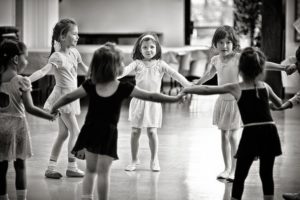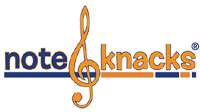 Today my kindergarteners and I had a lot of fun with the Three Bears! Last class we associated each bear with a particular bass bar. For this class, I wanted to say the words “someone’s been eating my porridge” (etc.….) in a specific rhythm, as detailed in last week’s newsletter (Click HERE for lesson and rhythms). Instead of just reading the story again and having them play this rhythm, we took it out for a spin, as they say. We tapped it on our thighs, we moved to it, and we played it on sand blocks. I then added the question, “What word has two long sounds?”. I had them close their eyes and just listen. They all called out “PORRIDGE!”. To be honest, I didn’t know if they were going to catch that, as it was 2 long sounds on one word, but they did …. yet another example of how we underestimate our students!
Today my kindergarteners and I had a lot of fun with the Three Bears! Last class we associated each bear with a particular bass bar. For this class, I wanted to say the words “someone’s been eating my porridge” (etc.….) in a specific rhythm, as detailed in last week’s newsletter (Click HERE for lesson and rhythms). Instead of just reading the story again and having them play this rhythm, we took it out for a spin, as they say. We tapped it on our thighs, we moved to it, and we played it on sand blocks. I then added the question, “What word has two long sounds?”. I had them close their eyes and just listen. They all called out “PORRIDGE!”. To be honest, I didn’t know if they were going to catch that, as it was 2 long sounds on one word, but they did …. yet another example of how we underestimate our students!
Earlier in the year, I brought out Note Knacks so that we could investigate long and short sounds, as explained in Phase 1 of our Lesson Plans. Today, I wanted to explore long and short sounds further within the context of our story rhythm:
- First, I took out our Note Knacks and we reviewed our long and short sounds.
- After we identified that there were 2 long sounds on the word por-ridge, I then tried something crazy to see what would happen: I said the rhythm but said the last 2 long sounds as I dragged my finger across the gray (twice, one for each note). I asked the kids if this sounded correct, they said no.
- Then I did the same thing with the blue tiles. One class said the blue was too long and the other group said it was just right…. which makes me think it is in how I said it…. but intriguing, none the less! The cool thing was they could hear when the word sounded rushed or not.
- I had written the notes on the board for my own reference, but the kids commented that I had written music notes. I told them it was indeed written music and it gave me information on how to say the words in a special way.
- For the class that chose the blues as the correct note, I did ask if the symbol on the blue tile was the same or different then on the board ~ of course it was!
- NOTE: at this point, we are simply looking at pictures that are the same or different, my intention was not for them to be able to identify a half note
- We moved on and I asked them, “How can we show a long sound with our body?”, each student couldn’t wait to show me their idea! Kids moved their arms, legs, waists, etc.…. it was a hoot to watch!
- We patted the rhythm on our thighs as we walked around. When we came to the long sounds, we froze and moved one part of our bodies showing those long sounds. I encouraged the kids to move anyway they chose ~ either as they had shown me earlier or to find a new way. We did it several times to give everyone a chance to try out as many body movements as possible!
- I wanted the kids to experience long sounds on an instrument, so we took out the sand blocks! We played around with them a bit, then played our 3 bears rhythm~ showing length by slowly moving the blocks.
It is exciting to see that they are beginning to understand the meaning of long and short sounds and better yet, what those sound like in the context of a longer rhythm. I love playing around with lessons and concepts! I always enjoy asking that one question that is just beyond their supposed understanding to see if anyone catches the answer. Sometimes they do, and I am delighted….and sometimes they don’t, and I hear crickets, so I move on knowing I had pushed it just a bit too far. I let kids know early on that there are times I do ask questions I do not expect them to know, I just want to see if they can figure it out. If they can, great! If not, no worries! …. for it is in these moments that I enjoy teaching the most!

0 Comments